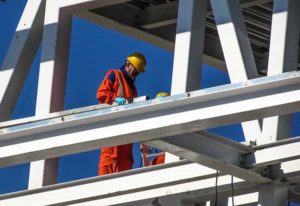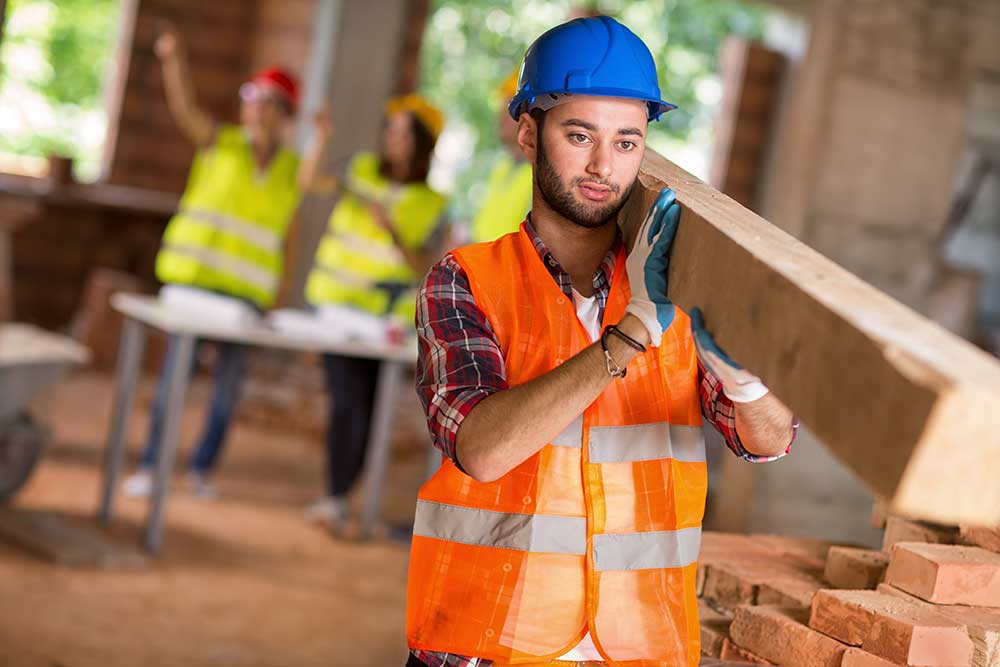Disclaimer: The information on our website is provided for general information purposes only. We make no representations or warranties of any kind, express or implied, about the completeness, accuracy, reliability, suitability or availability with respect to the website or the information contained on our website for any purpose. Any reliance on such information is therefore strictly at your own risk and we are not liable for any damages or losses arising out of or resulting from your reliance on any information contained on our website.
Construction workers play a pivotal role in every phase of construction. Because of this, their tasks encompass a wide spectrum of activities. Some workers even specialize in using advanced technology, like lasers and robotic pipe cutters. Additionally, certified construction workers may handle hazardous materials removal, including lead, chemicals, or asbestos. Their expertise and versatility make them indispensable contributors to the construction industry. Watch a video to learn more about construction laborers.
How to Become a Construction Worker

Construction workers typically learn their trade through on-the-job training with no formal education required. However, high school courses in welding, mathematics, and blue print reading is helpful. Some workers attend a trade school or community college, or apprenticeship programs that usually include 2-4 years of technical instruction and on-the-job training.
The Laborers’ International Union of North America (link opens in a new window) requires at least 4,000 hours of on-the-job training and 300 hours of related instruction in areas like signaling, blue print reading, safety and health procedures, and the proper use of equipment and tools. The remainder of the curriculum consists of specialized training in one of these eight areas: pipeline construction, masonry, building construction, environmental remediation, road and utility construction, tunneling, demolition and deconstruction, and landscaping.
Some apprenticeship programs have preferred entry for veterans. Laborers may require specific certifications or meet federal and state requirements depending on the work they do. According to O*NET OnLine, most construction workers have a high school diploma.
Job Description of a Construction Laborer and Helper
Construction workers help during all phases of construction from operating jackhammers, traffic control on road crews, or using surveying equipment. They have a wide variety of work during all phases of construction. He or she operates or tends equipment and machines needed for a construction job. They may dig trenches, backfill holes, or compact earth to prepare for construction. Those laborers with special training may transport and use explosives or run hydraulic boring machines to dig out tunnels. They may use lasers to place pipes and use computers to control robotic pipe cutters. He or she may remove lead, chemicals, or asbestos if certified.
Helpers assist construction craft workers with the duties of loading or unloading building materials that are needed for a construction job or build and take apart scaffolding, bracing, and temporary structures. He or she may have the job of setting forms for poured concrete or the duty of cleaning up sites, taking apart equipment, or disposing of waste. The following construction trades have associated helpers: tile and marble setters, brick, block, and stonemasons, carpenters, electricians, painters, pipe layers, and roofers.
Construction Laborer Career Video Transcript
Construction laborers are skilled workers who do much of the physically demanding labor at all kinds of construction projects, from excavation to building and demolition. They use a variety of hand and power tools to hammer, lift, saw, and measure materials. Depending on the specialty of their employer, laborers might prepare a worksite, dig trenches, mix and place concrete, or even work with hazardous materials or explosives. Clean-up is usually in the job description.
In different phases of construction, laborers assist other trades workers, and may need to interpret plans or specifications to set work priorities. They may also direct traffic around a work area to keep other workers safe. But all construction laborers can expect to do repetitive, physically demanding work with noise, fumes, and dangers that require safety gear such as hard hats, gloves, face masks, ear protectors, and eyewear. Some employers require a high school diploma, but related work experience, strength, reliability, and safety are often more important to getting hired in this field.
Article Citations
Bureau of Labor Statistics, U.S. Department of Labor, Occupational Outlook Handbook, Construction Laborers and Helpers.
National Center for O*NET Development. 47-2061.00. O*NET OnLine.


